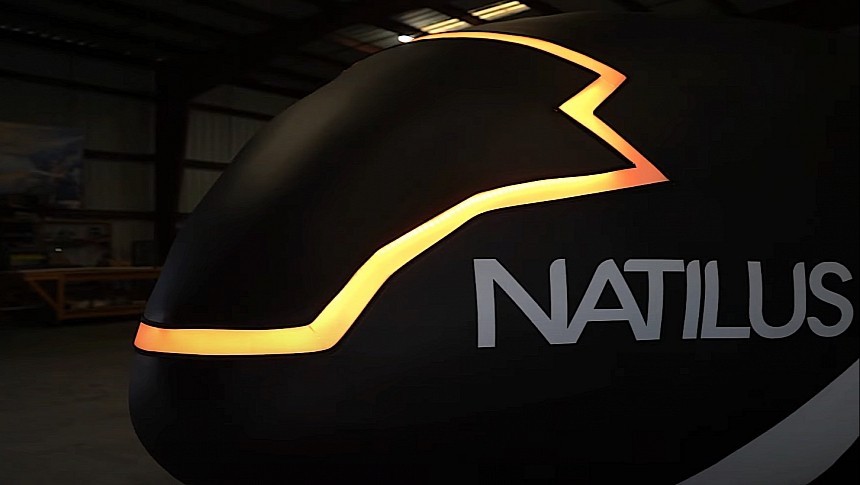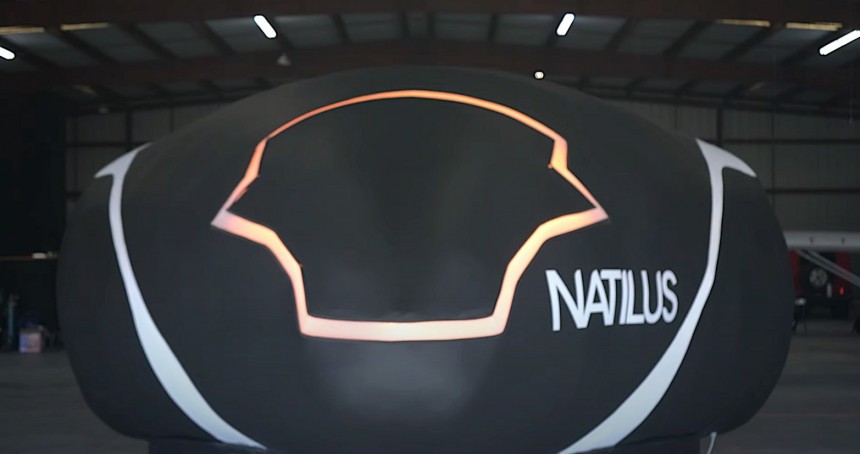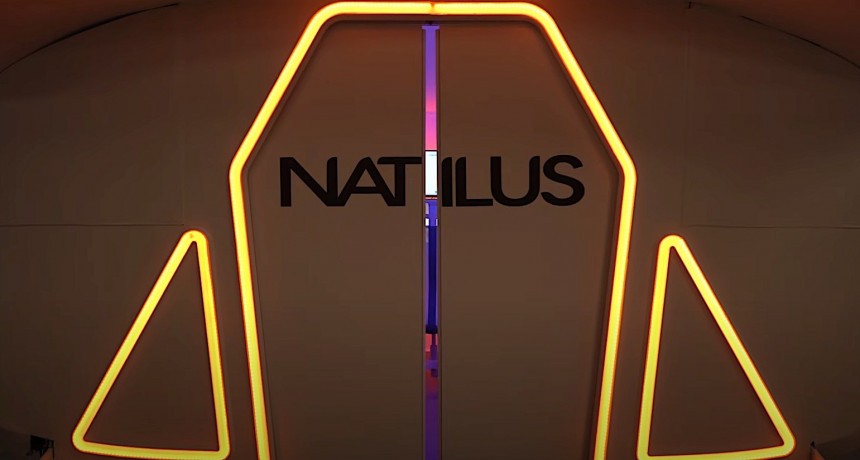Our line of work oftentimes brings us face to face with incredible aircraft designs ready, more or less, to take to the skies of the future. Some of these aircraft are drones of sorts, with a few of them having the potential to change the world.
While many companies playing the aviation industry game are trying to find solutions for the transport of people, a handful of them are working on ways to advance air cargo transportation. And to these eyes, a crew called Natilus seems the most promising.
And it couldn't be any other way, given how the slogan under which the California startup is nothing more, and nothing less than "reinventing global air freight."
We've talked at length not long ago about what this company is proposing. In essence, it is developing a range of cargo drones, some of them of incredible size, meant to make transport through the air easier and more effective.
As a reminder of what we're talking about, the Natilus drone family is made up of blended wing body (BWB) aircraft that when ready will be capable of carrying anywhere between 43 and 143 metric tons of stuff to intercontinental distances that could be as large as 5,883 miles (9,468 km).
As for what powers then, depending on the type of drone, the Natilus will come as twin-engine turboprops, with the first one, the Kona, to get its kicks from hydrogen-electric powerplants. In the future, perhaps even more daring solutions will become available for the fleet.
As I said at the beginning of this piece, our line of work oftentimes brings us face-to-face with such things, and we're always happy to share whatever we learn with you. But don't you sometimes get the feeling something is missing from this drone picture?
That something has to do with the way many of these drones are controlled. Although a small number of these vehicles come with autonomous capabilities, many, including the Natilus ones, still require pilots.
How do they train them? Where are they located when they fly these drones? What does such a remote control workstation look like? Well, at least some of those questions will be answered by Natilus with something called the POD.
When looked at from afar, POD looks like a drone itself, with a pointy nose and a bulky rear, an enclosed cockpit with the most exciting light show on the outside, but no rear to complete the look.
Only it's not a drone. POD stands for Pilot Operations Desk, and it is supposed to be a "cutting-edge ground control station" for the upcoming family of drones. And as fancy as it looks on the outside, as boring it is on the inside.
There, all one has to look at is a desk, a very wide computer screen, the tiniest of keyboards, and a special kind of input device whose nature was not explained. What's very cool about it is how it allows you in, through two sliding doors that kind of reminds me of similar things seen on the starships in some sci-fi movies.
The POD is supposed to work as a remote control station for Natilus drone pilots, but it will also be suitable for training purposes (and some would say it could even be a very cool gaming room). That's because, despite the rather spartan interior, and totally out of sync with what we get in modern-day airplanes in terms of instrumentation, it should allow "pilots to interface with the skies as seamlessly as if they were in the cockpit." And that no matter where these drones are in the skies of our world.
The exact specs of the system were not disclosed, but we do know it should eventually allow a single operator to handle as many as three drones at a time, while maintaining contact with air traffic control through voice of data comms for the safety of operations.
The Natilus POD was developed by the company together with Ameriflight, a UPS partner that has grown to become the country's largest Part 135 carrier. The air cargo company got involved in this because, as it happens, it invested no less than $134 million in the drone maker, expecting from it in return no less than 20 drones.
Ameriflight is not alone in this, as several other companies in this business, including Volatus Aerospace, Astral Aviation, or Aurora International, have expressed interest in the aircraft design.
Sadly for all of them, Natilus did not specifically say if the POD is ready for operation, or when we should expect that to happen. The system will probably be sold to all those who will be operating Natilus drones.
What we do know is that the first Natilus drone will probably not get airborne before 2025 (in the twin-engine turboprop configuration that's also the smallest of the entire lineup).
And it couldn't be any other way, given how the slogan under which the California startup is nothing more, and nothing less than "reinventing global air freight."
We've talked at length not long ago about what this company is proposing. In essence, it is developing a range of cargo drones, some of them of incredible size, meant to make transport through the air easier and more effective.
As a reminder of what we're talking about, the Natilus drone family is made up of blended wing body (BWB) aircraft that when ready will be capable of carrying anywhere between 43 and 143 metric tons of stuff to intercontinental distances that could be as large as 5,883 miles (9,468 km).
As for what powers then, depending on the type of drone, the Natilus will come as twin-engine turboprops, with the first one, the Kona, to get its kicks from hydrogen-electric powerplants. In the future, perhaps even more daring solutions will become available for the fleet.
As I said at the beginning of this piece, our line of work oftentimes brings us face-to-face with such things, and we're always happy to share whatever we learn with you. But don't you sometimes get the feeling something is missing from this drone picture?
How do they train them? Where are they located when they fly these drones? What does such a remote control workstation look like? Well, at least some of those questions will be answered by Natilus with something called the POD.
When looked at from afar, POD looks like a drone itself, with a pointy nose and a bulky rear, an enclosed cockpit with the most exciting light show on the outside, but no rear to complete the look.
Only it's not a drone. POD stands for Pilot Operations Desk, and it is supposed to be a "cutting-edge ground control station" for the upcoming family of drones. And as fancy as it looks on the outside, as boring it is on the inside.
There, all one has to look at is a desk, a very wide computer screen, the tiniest of keyboards, and a special kind of input device whose nature was not explained. What's very cool about it is how it allows you in, through two sliding doors that kind of reminds me of similar things seen on the starships in some sci-fi movies.
The POD is supposed to work as a remote control station for Natilus drone pilots, but it will also be suitable for training purposes (and some would say it could even be a very cool gaming room). That's because, despite the rather spartan interior, and totally out of sync with what we get in modern-day airplanes in terms of instrumentation, it should allow "pilots to interface with the skies as seamlessly as if they were in the cockpit." And that no matter where these drones are in the skies of our world.
The Natilus POD was developed by the company together with Ameriflight, a UPS partner that has grown to become the country's largest Part 135 carrier. The air cargo company got involved in this because, as it happens, it invested no less than $134 million in the drone maker, expecting from it in return no less than 20 drones.
Ameriflight is not alone in this, as several other companies in this business, including Volatus Aerospace, Astral Aviation, or Aurora International, have expressed interest in the aircraft design.
Sadly for all of them, Natilus did not specifically say if the POD is ready for operation, or when we should expect that to happen. The system will probably be sold to all those who will be operating Natilus drones.
What we do know is that the first Natilus drone will probably not get airborne before 2025 (in the twin-engine turboprop configuration that's also the smallest of the entire lineup).











